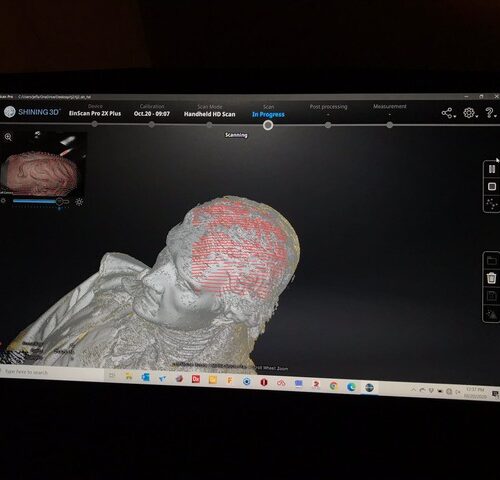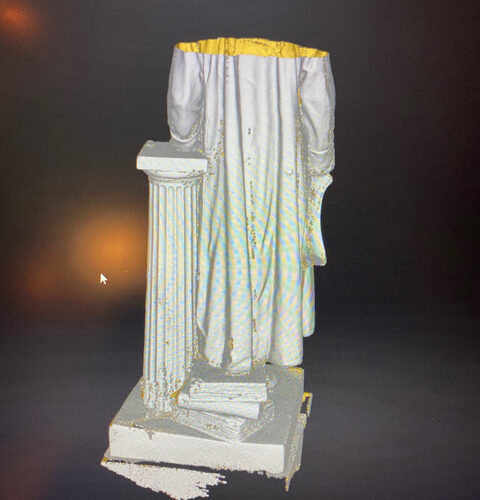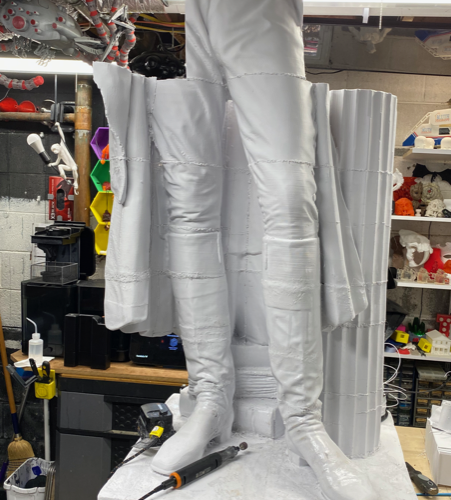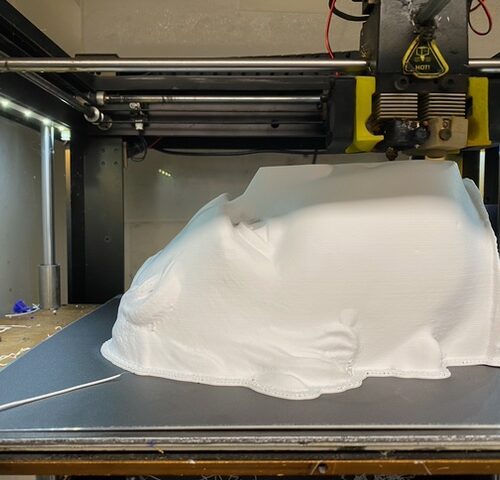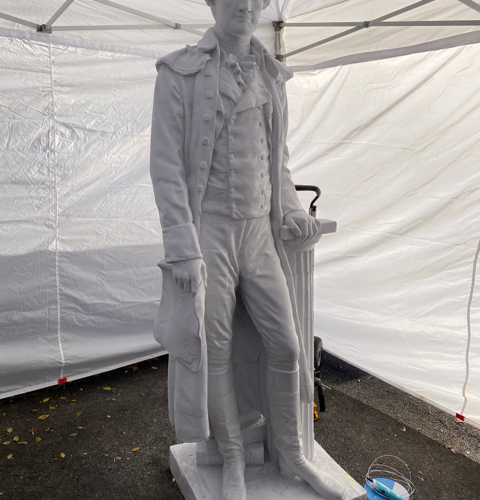The Project
We were hired to perform a 3d scan of the Thomas Jefferson statue by Edward Valentine, which is housed at the American Revolution Museum at Yorktown (ARMY).
The original statue with base is 8’ tall. The statue and base sit on a 3’ pedestal, making full height 11’ tall. (3’ pedestal was not scanned).
The purpose of the project was to create a 3d printed copy of the statue at actual size that did not need to be kept in a controlled environment to be put on display in downtown Richmond.
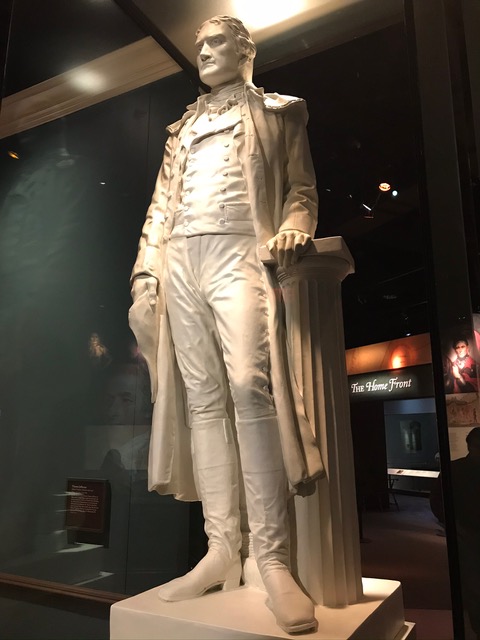
3D Scanning
The scanner is attached to a computer via a 10’ cable which is processing the raw scan data in real time.
Due to the size of this statue, we broke the scan into two 6’ sections with a 2’ overlap in the halves to assist the software with auto aligning the two parts.
The 8′ statue took around 4 hours to scan in a controlled lighting environment.
The cleaned up 3d model is around 1.8GB in size.
3D Scanning Challenges:
The high-resolution 3d scanner we work with uses visual light, infrared light and laser light to capture surface texture and depth. The scanner is held 12″-16″ away from the surface, so some areas of the statue were a challenge or impossible to scan.
Some examples of challenges with this statue were:
Jefferson was wearing a long coat, so the back of legs and the interior of the jacket (that was blocked by the legs) was impossible to capture completely. The processing software had to interpolate what some of these areas would look like based on surrounding areas that could be scanned and fill in the data.
The scanner can only capture depths of crevices and holes at ⅔ the diameter of the opening (example: if you have a 1″ hole, the scanner can only capture 0.66″ of the hole’s depth). So the areas under the lapel of the jacket, his nostrils, and the gap between his left thumb and fingers aren’t as deep as the original statue.
The other challenge was the size of the statue (8′ statue on a 3′ pedestal) – we required a 15′ ladder to be able to scan the top of the head.
3D Printing
The scan was 3d printed at actual size in 12” sections in ABS plastic (same plastic Legos are made of). Sections were chemically welded together with acetone and seams were smoothed with heat and sanding.
The interior of the statue was not printed. The interior area was left hollow and filled with low expansion spray foam, which reduced total weight, time to produce the parts and overall cost of the project. The finished weight of the 8′ tall statue was around 50lbs.
It took around 4 weeks to print all parts and an additional week to clean up the seams. (Assembly was on-going during 3d printing).
The Finished Product
Comparing the original (on left in photo) and the 3d printed version (right):
- The 3d printed version surface is shinier than the original. (this could be rectified with some surface treatments).
- We removed some of the signs of past surface repairs on the original when we cleaned up the digital file, so some of the “character” of the original was removed in the 3d printed version. (We could have left these in the digital file or on the 3d print).
- The 3d printed version is around 50 lbs., so it’s much, much lighter than the original and easier for the staff to move.
- The 3d printed version does not need to be kept in a climate controlled space.
- The 3d printed version can be wiped down with a damp cloth to remove dust.
- The digital file can be used to make smaller or larger 3d printed versions of the original statue. (so you could have a 12″ version that could be sold as souvenir or given as gifts to donors, or even turned into a Christmas tree ornament sold in the gift shop).
- The 3d printed version can be painted with oil, latex or acrylic paints to simulate bronze, brass, gold, or any other surface finish.



